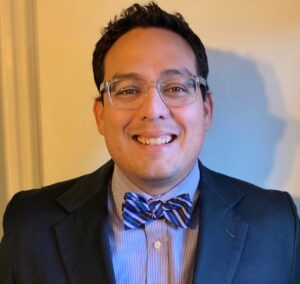immigration
Select an item by clicking its checkbox
Watching news of ICE arrests and protests in Los Angeles, I cannot help but think how we have got here. The perception of many people who voted for President Trump is that there are too many “illegals” in this country. The reason for this impression, perhaps, is that the Latino ...

Transnational Migration, Social Inclusion, and Adult Education (New Directions for Adult and Continuing Education, Number 146)
Date Reviewed: November 30, -0001
Adult education is an area of study and application that has helped bridge the gap between immigrant populations and the bureaucratic systems regulating said populations. This has been accomplished by implementing formal and informal training as well as collaborating with settlement services and other programs. Sadly, the bent of much of this training (specifically within Canada, the U.S., and Australia, in which this volume’s featured studies are located), was geared historically toward assimilating immigrants rather than integrating them into their host countries. Even today, the underlying narrative of immigration policy in these countries is highly colonial and assimilationist.
This volume attempts to elucidate the key conflicts at work between immigrants, host countries’ policies, and service workers. Using Nancy Fraser’s theoretical constructs of redistributive, recognitive, and representational justice, the authors present solutions and insights into how adult education as a field can assist immigrants in challenging exploitation and influence policy towards a more socially just outcome. Applying Fraser’s theory to adult education, Shibao Guo defines recognitive adult education as one that “affirms cultural difference and diversity as positive and desireable assets” (15). This collection addresses the conflicting interests at work within immigration and education and points to possible ways adult educators and others can mitigate the negative realities that immigrants face.
The topic of immigration is dense and multifaceted so thankfully the chapters are concise and accessible. Given that “the United Nations now estimates that 232 million of the world’s population lives outside the country of their birth,” transnational migration can no longer be ignored (2). One takeaway from this collection of nine chapters is that there is a marked disconnect between immigrants’ experiences and the policies created to regulate them. Immigrants face a myriad of challenges: the devaluation of foreign credentials, possible exploitation, racism, discrimination, heightened security policies of receiving countries, and broken bureaucratic systems. The nature of immigration has also changed. Shibao Guo provides a helpful description of how transnational migration is different from other types of migration by defining it as “multiple and circular migration across spaces of migrants who maintain close contact with their countries of origin” (7). This type of migration is a far cry from migration patterns of the nineteenth and twentieth centuries when migration was often described as “one way” and immigrants were expected to completely assimilate into the receiving country’s culture, leaving all traces of “foreignness” behind. Each of the chapters echo Shibao Guo’s call for adult education to “continue its long-standing commitment to social inclusion by working toward a more inclusive adult education squarely focused on the benefit of marginalized adult learners (e.g., workers, farmers, women, racialized minorities)” (8).
The statistics reported are simply staggering. Bonnie L. Slade cites the Longitudinal Survey of Immigrants to Canada (LSIC), which reports that “although 76% of new immigrants have at least one type of international credential, such as a university degree, 70% experienced barriers in gaining access to the Canadian labor market at an appropriate level” (67). As Slade and others note, the devaluation of foreign creditials often leads to underemployment or unemployment, especially for immigrant women.
Critically studying the language used in immigration policy and the theoretical position taken by policy makers may also assist adult educators in unpacking some of the undercurrents of racism and colonialism still at work in policy creation. As Edward Joaquin and Juanita Johnson-Bailey point out, the “issue of immigration has generally been cloaked in the language of patriotism and nationalism” (79). While overt racism and bias may be shunned in modern discourses around immigration “predjuice has become coded and wrapped in new, less offensive language and discussion” (80). Joaquin and Johnson-Bailey also suggest that adult education programs “adapt their curriculum to educate learners about transmigrational immigrant education concerns” as well as “infuse strategies that address the needs of immigrant students” (83). Yan Gao’s chapter on ESL programs in Canada illustates how some language programs have become mechanisms to create and control workers. Yan Gao suggests that adult educators in Canada “help immigrants develop critical language awareness” which will allow them to contest unfair practices (48). Perhaps one of the most promising avenues for change comes from Tara Gibb who suggests “inviting policymakers and employers into literacy classrooms and language classrooms so that they might observe firsthand alternative forms of assessment, view holistic respresentations of language and literacy practices, and listen to immigrants’ experiences and expressions of knowledge” (60). In these instances, adult educators are being called on to actively educate themselves, their students – immigrant and nonimmigrant alike – and policy makers on these issues.
This collection provides an intriguing foray into the brave new world of immigration. It lends itself not only to adult educators who work with immigrants but also to those who do not. College faculty, administrators, and staff in the Global North would benefit from reading this volume because if transnational migration continues on its current trajectory, it will vastly change our institutional as well as national demographics.
